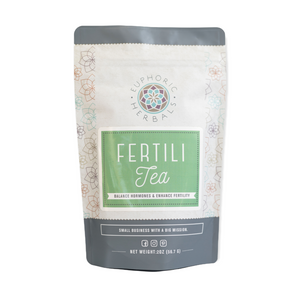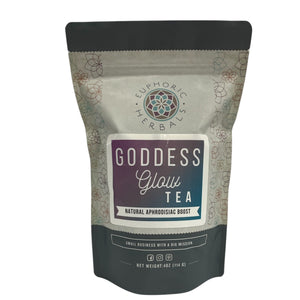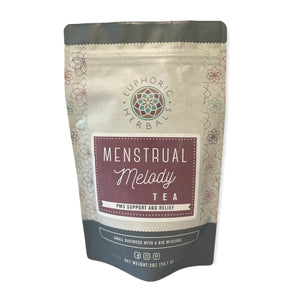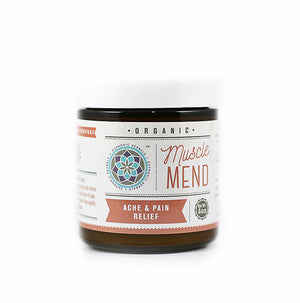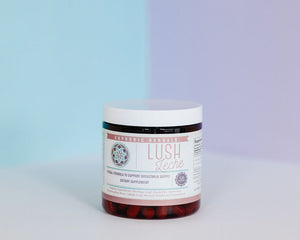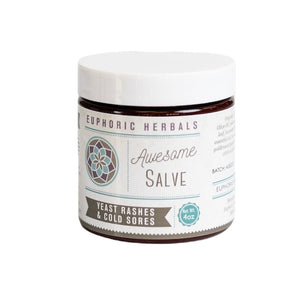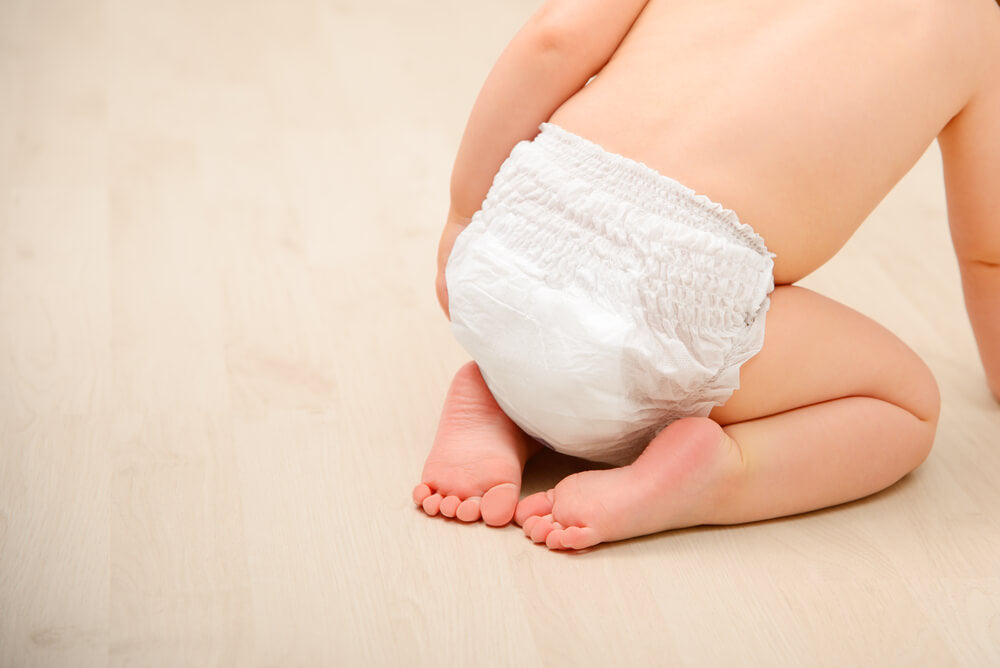Diaper rash is something most parents have to deal with. It's one of the most common skin issues for babies and young children. Often, this is a problem you can deal with yourself by using some simple home remedies for diaper rash.
If and when diaper rash does show up on your little one, understanding what causes it will help you treat it. Having a few simple (and natural) remedies on hand will also go a long way and help you to clear the rash up quickly.
With that in mind, here's more about what causes the problem, plus the top home remedies for diaper rash.
What Is Diaper Rash?
Diaper rash shows up as red splotches, bumps, or scales on your baby's skin. It often occurs on their bottom, but can appear anywhere under where the diaper sits, including the genital area. Most often, it will appear in the age range of infant to 2 or 3 years old (diaper-wearing years).
Although the rash can be uncomfortable and sometimes itchy, it's usually very treatable. There are also steps you can take to prevent diaper rash from coming back, although some babies are more prone to it than others.
Possible Causes of Diaper Rash
It's important to realize that there are several possible causes for diaper rash. There's also the potential for your baby's rash to be caused by either bacteria or yeast. Yeast rashes are often harder to treat than bacterial ones.
The main culprits behind diaper rash are irritation to your baby's sensitive skin and too much dampness in the diaper area. Here's a list of a few possible specific causes:
- A diaper that's too tight or something else that chafes their skin
- Leaving a wet diaper on for too long
- Ammonia from urine and feces that sit too long
- Diarrhea
- Irritation from chemicals or fragrances
- Sensitivity to a new food
- The introduction of solid foods (makes the stool more acidic)
- Bacterial or yeast infection
Now that you know what can cause the problem, here are ways to fix and/or prevent it.
Simple Home Remedies for Diaper Rash
Change Diapers More Often

Wet and dirty diapers can easily irritate the soft skin of your baby and cause a rash. Ideally, you want to change diapers as often as needed to keep your baby clean and dry. Feces, especially, contain bacteria that can get a rash going if they sit against the skin for too long. (1)
Something else to pay attention to is how tight the diaper is on your little one. Chafing is another major cause of diaper rash, so make sure you don't wrap the diaper too tightly.
Give Skin Some Fresh Air
Another tip for treating or preventing diaper rash is to let your baby spend time each day without a diaper. This allows their skin to dry out and can help irritated skin to heal more quickly.
Cleaning them thoroughly during a diaper change and allowing the skin to dry completely before putting a new diaper on can help a lot. Also, think about the type of material your diapers are made of. You want something that's breathable as well as absorbent.
Try Switching Diaper Brands
If you find that diaper rash keeps returning despite your best efforts, it may be worthwhile to try a different kind of diaper. There may be something about the brand you're using that is a skin irritant for your little one.
Cloth diapers have become much popular recently as an alternative to disposable ones. However, some moms have found that temporarily taking a break from cloth has helped a diaper rash to heal. An older study (from 1982) also indicates that cloth diapers may be more likely to cause a rash. (2)
This doesn't mean you need to abandon cloth diapers, but a short break is worth a try. You can also try changing them more frequently and making sure all soap residue is completely rinsed off after washing them.
Use Bentonite Clay
Bentonite clay has a long history of use for itchy skin and rashes. It has absorbent properties that help to get rid of extra moisture and has been found in studies to be one of the most effective home remedies for diaper rash. (2)(3)
You can use clay on its own as a "baby powder," or mix it with something like coconut oil and shea butter to make a cream.
Use a Natural Cream or Salve

Synthetic chemicals and fragrances can be harsh on your baby's skin and make a rash worse. Even strong natural ingredients may cause irritation.
However, applying a cream or salve with natural (and gentle) ingredients can help to soothe an existing diaper rash or prevent one. The best base to use is something mild like coconut oil, olive oil, and/or shea butter. Calendula is frequently used for diaper rashes, and other herbs like lavender, comfrey, and chickweed are also extremely soothing for irritated skin.
You can find a recipe to make your own cream, or use a natural product like this Baby Balm.
Avoid Baby Wipes
Avoiding baby wipes may sound contradictory, since keeping your baby's skin clean is important for preventing diaper rash. However, many baby wipes contain chemicals that may irritate an already present rash. They can also leave a film on the skin that invites bacteria.
Simply using a soft washcloth with water can do a good enough job of cleansing the skin (although it will mean more laundry). You can also add a tiny bit of natural, fragrance-free soap to cleanse better.
At the very least, switch to baby wipes that have very few ingredients and no fragrances. And don't forget to allow the skin to dry out before putting on another diaper.
Avoid Using Scented Products
Besides baby wipes, there are other products that may irritate your baby's skin, causing a rash. Often, these are products with synthetic fragrances added. This could include things like soap, laundry detergent, creams, and bubble baths. Even dryer sheets and fabric softeners can cause irritation.
Go for unscented and natural whenever possible.
Pay Attention to Diet
Diarrhea is one possible cause of diaper rash and so is a change in diet. The addition of solid foods can especially trigger a change in the amount of acid in your child's stools, which increases the chance of a rash developing.
It's always best to add new foods gradually and in small amounts. If your little one frequently has diarrhea, finding and treating the cause of it can help with any rashes that appear as well.
Bland foods like bread, rice, and applesauce are frequently recommended for upset tummies and diarrhea. You can also check for food sensitivities that may be causing problems.
Precautions + When to See Your Doctor
Some mothers have reported success using arrowroot powder or cornstarch to clear up diaper rash, but these aren't the best choices. Both are absorbent and can help to dry the skin out, but they also both contain starches that will feed a yeast diaper rash, possibly making it worse.
Despite the name, baby powder is not good to use on your baby, either. The major ingredient in it is talc, which is now linked to cancer, and it can hurt your baby's lungs if inhaled.
If your baby's rash isn't responding to any treatments, it's possible they have a yeast rash rather than a bacterial one. This type can be more difficult to deal with and may require stronger treatment.
Though many parents have success with home remedies for diaper rash, here are a few signs you need to take your little one to the doctor:
- Blisters or bright red skin that peels off
- Swelling
- Pus or discharge that oozes from the rash
- Fever or any other additional symptoms
- Extremely raw or bleeding skin
- A rash that doesn't clear up or gets worse
Defeat Diaper Rash with Home Remedies
Though dealing with diaper rash can be frustrating, it does usually clear up simply by using home remedies like these ones. You can also take steps to keep it from coming back and learn what triggers it. Keep something like this Baby Balm on hand in case it does return in the future.
Besides diaper rash, cradle cap is another skin issue that babies are prone to. You can use some simple home remedies to get rid of it, too!






















































